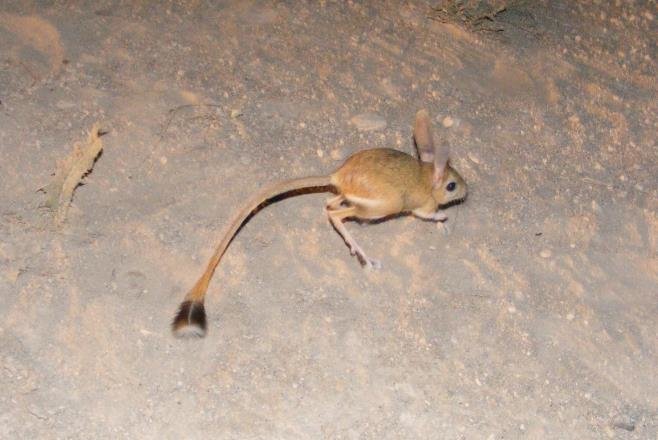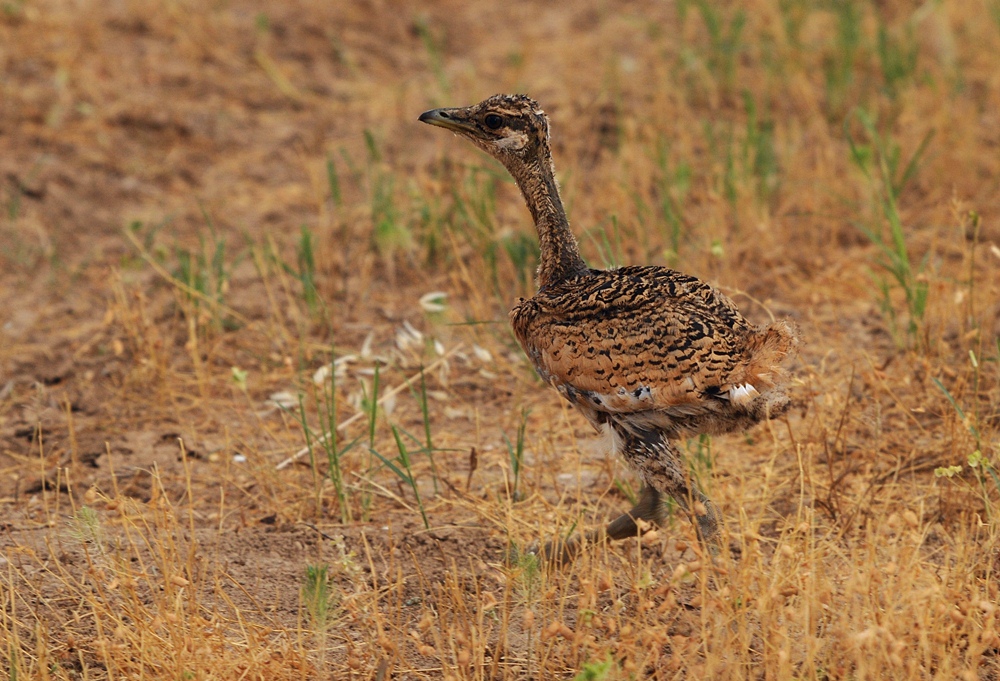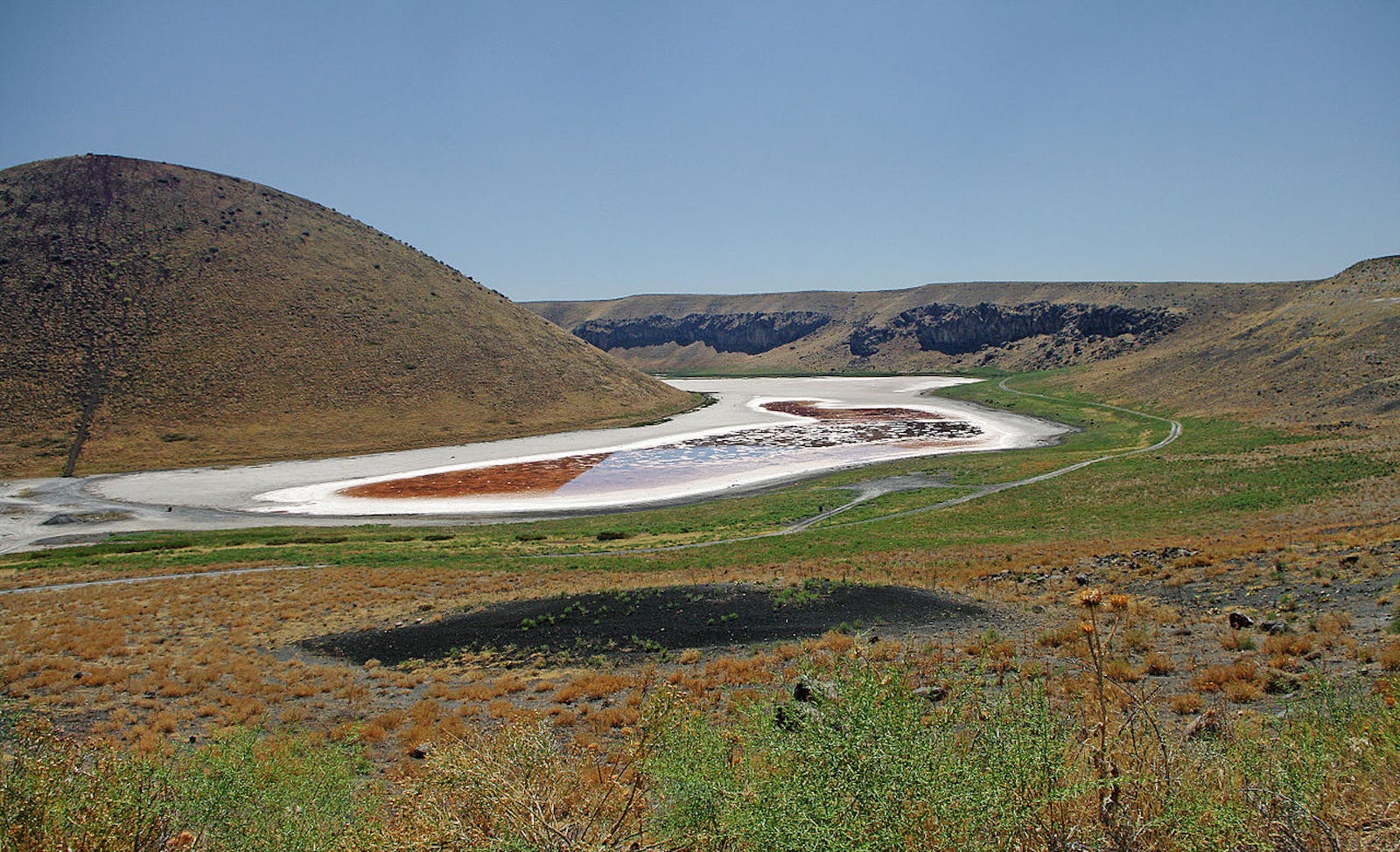Central Anatolian Steppe
The ecoregion’s land area is provided in units of 1,000 hectares. The conservation target is the Global Safety Net (GSN1) area for the given ecoregion. The protection level indicates the percentage of the GSN goal that is currently protected on a scale of 0-10. N/A means data is not available at this time.
Bioregion: Black Sea, Caucasus-Anatolian Mixed Forests & Steppe (PA17)
Realm: Western Eurasia
Ecoregion Size (1000 ha):
2,497
Ecoregion ID:
725
Conservation Target:
36%
Protection Level:
0
States: Turkey
Mesmeric salt lakes glimmer in the lowland basins of this otherworldly landscape. Vast salt plains are interwoven with a network of rivers and lakes, forming distinctive steppic waterlands that offer sanctuary to many revered bird species. Marbled teal, white-headed duck, pallid harrier, and collared pratincole thrive here, alongside astounding flocks of greater flamingo. Flaunting their fantastically pink plumage, these iconic birds transform the glistening salt lakes into a riot of color.

The flagship species of the Central Anatolian Steppe ecoregion is the Williams’s jerboa. Image credit: Kubilay Toyran, Researchgate
This ecoregion is comprised of five distinct areas in the Central Anatolian region of Turkey. These lowlands host salt steppes, marshes, rivers, and saline lakes, and are typified by a continental climate of cold winters and hot, dry summers. Annual precipitation ranges from 400 to 500 mm, decreasing to 300 mm in certain places depending on the micro-topography. There are no mountains or highlands here, and the average altitude is around 1,000 m.
The spectacular Lake Tuz dominates the center of the region, the largest salt lake in Anatolia. Bounded by brackish marshes and rich in endemics, these shallow waters mostly dry up over summer to expose a 30 cm thick layer of salt. Anatolia’s longest river, the Kızılırmak, arches across the Northeast of the region. Salt steppes are abundant in salt tolerant goosefoot and leadwort species, whilst less saline regions are dominated by Limonium anatolicum. Freshwaters abound with reeds and nutsedges, the latter of which form distinctive communities that boast a high degree of endemism.

Juvenile great bustard. Image credit: Creative Commons
Mammals of the salt steppes include the Turkish hamster, Asia minor ground squirrel, and the small hopping rodent Williams’s jerboa, whilst reptiles are represented by starred agama, Eurasian blind snake, and coin-marked snake. Lake Tuz is a vital center of biodiversity. Several endemic plant species flourish in the steppes fringing the shoreline, including Hypericum salsugineum, Gladiolus halophilus, and Acantholimon halophilum. The waters are crucial habitat for the endemic fat spring minnow, as well as for many migratory birds; colonies of greater flamingos can number some 5,000–6,000 nests, making the lake one of their most significant breeding grounds worldwide.
.jpg)
Greater flamingo. Image credit: Sarangib, Creative Commons
Salt steppes are not naturally suited to agriculture, but in recent years they have been leached through draining and irrigation to make the land arable. This has encouraged migration of people to such areas, increasing population pressure and intensifying agricultural impact on the land. Salt-tolerant sugar beet is a key crop across the steppes, and it is grown alongside cereals and sunflowers in the land surrounding Lake Tuz.
The lake itself is exploited for salt mining; some 750,000 tons of salt is harvested annually, accounting for 55% of salt production in Turkey. Though largely unprotected, there are still vast areas of pristine salt steppe in the Konya Basin. Lake Tuz is a Specially Protected Area, which incorporates all surface waters, surrounding waterbeds, and some important neighbouring steppic areas.

Verbascum wiedemannianum. Image credit: Creative Commons
Wetlands are principally threatened by the over-consumption of freshwater resources, resulting in the disruption of natural water regimes and a decrease in the freshwater content of lakes and streams. Conversion of salt steppes to agricultural lands has caused habitat loss, and ploughed steppes have become unsuitable habitat for William’s jerboa and many other small mammal species. Additionally, overgrazing has damaged salt marshes. The quality of Lake Tuz’s water is deteriorating due to pollution with untreated wastewaters, though Turkey’s Authority for Specially Protected Areas is focused on tackling this issue.
The priority conservation actions for the next decade will be to: 1) control and limit extraction of water to prevent further soil degradation; 2) establish protected areas across the wider region, beyond just the Lake Tuz area; and 3) ensure protection of remaining pristine salt steppes from further conversion for agriculture.
Citations
1. European Environment Agency (2008). The Anatolian region - the biogeographical transition to Asia. Europe's biodiversity - biogeographical regions and seas.
2. Mergen, O. and Karacaoglu, C., 2015. Tuz Lake Special Environment Protection Area, Central Anatolia, Turkey: The EUNIS Habitat Classification and Habitat Change Detection between 1987 and 2007. Ekoloji Dergisi, 24(95).
3. WWF. 2018. Western Asia: Central Turkey. [Online]. [Accessed 31st May 2019]. Available from: https://www.worldwildlife.org/ecoregions/pa0803


.png?auto=compress%2Cformat&w=300)

